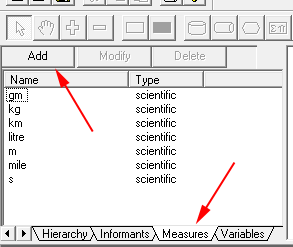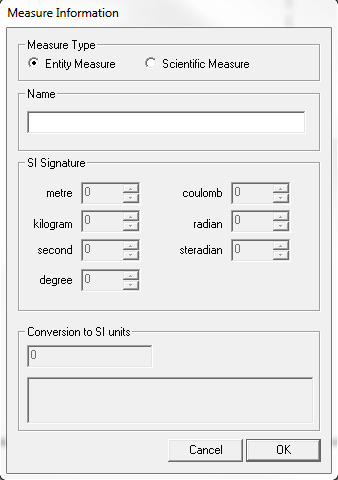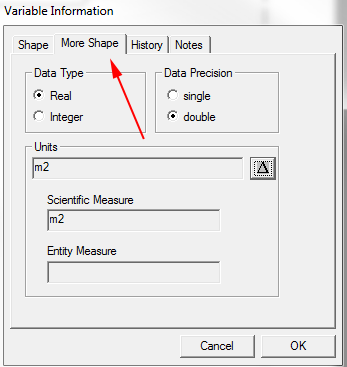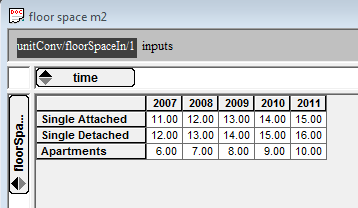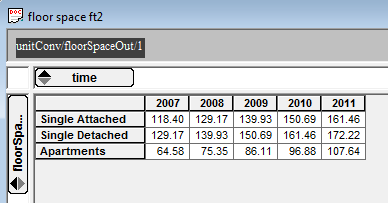Unit of Measure Conversions
There are two unit of measure parameters included with every TOOL object: the SI unit of measure (SIuom) and the alternate unit of measure (altUom).
SIUom is the “base” unit for the data, used for storage, calculations and interactions with other objects.
altUom is the display and input unit of measure that will be used anytime you interact with the data. Interacting would include: the display tools like table, and graph, entering data manually through these tools, and direct assignment in code in views. Each altUom should be setup in the measures table (see measures tab in Documenter) to specify how the conversion to the related SIUom should be done.
TOOL can handle unit of measure conversions across multiple objects seamlessly provided that the user defines the new measure in Documenter and properly specifies the unit of measure when defining the shape of a variable. The general steps to implement unit of measure conversions are:
- Define relevant altUom measures in Documenter
- Specify a unit of measure (altUom) for the source variable shape that matches the unit of measure of the source data
- Create a target variable with the same shape as the source variable but with the desired unit of measure (altUom)
- Set the target variable equal to the source variable
The target variable will be displayed in the desired unit of measure.
Example
For this example we are going be importing floor area data in m2 and converting the output to ft2
First we need to define the required altUom measures in Documenter.
To do this:
- Go to the measures tab and click the Add button
This will open the Measure Information window
- Define the new altUom measures as follows:
m2
Measure Type - Scientific Measure
Name - m2
SI Signature - m^2
Conversion to SI units - 1
ft2
Measure Type - Scientific Measure
Name - ft2
SI Signature - m^2
Conversion to SI units - 10.7639
Once the altUom's have been created we need to apply them to the shapes of our variables fuelConIn and fuelConOut.
We will need to set the altUom for the variable floorSpaceIn to m2 and the altUom for the variable floorSpaceOut to ft2.
To do this:
- Double click on the variable floorSpaceIn in the diagram. This will open the Variable Information window.
- Navigate to the More Shape tab
- Specify m2 as the numerator
- Click OK to exit the Units window
- Click Ok to exit the Variable Information window
Repeat this process for the variable floorSpaceOut with ft2 as the numerator
- Now we can set floorSpaceOut equal to floorSpaceIn in procedure 1 using the following code
floorSpaceOut[fs,t]=floorSpaceIn[fs,t]
After loading the model from Documenter into SAMM and importing the source data into SAMM we can see how the source data which is in m2 gets converted to ft2 in the target variable in the tables below

